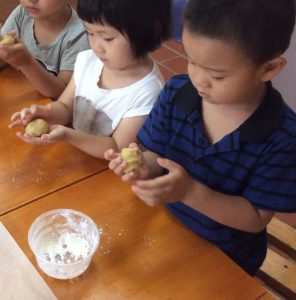Earthquake Detector
One student made an earthquake detector using Lego.

(Agency: When students are actively involved in discussion, questioning and by being self-directed in their creating (as opposed to passive receiving)
He explained. “This is an earthquake detector, when there is an earthquake it spins.”
Teacher “Which countries have it? Do you get them in China?”
Student “England, Germany, France.”
Teacher “And how does it help people?”
Student “It tells them there is an earthquake. How do earthquakes happen?”
We watched a Brainpop video on fast land changes to help us lean more about earthquakes. we will continue to inquire into natural disasters.
 SLO’s
SLO’s
- there are bodies on water/land on Earth
- how to ask questions about the natural and physical environment
- that natural disasters can happen
- enthusiasm and respect for nature and Earth
- their care and concern for Earth and its environment





















































 Starting in a new school or a new classroom can be overwhelming for some students. Getting to know the community that we work and play with takes time. We need to trust and be patient. The students explored their options for play and were eager to take on new challenges. These are our first steps. Watch this space to learn more about our interesting stories and journeys of learning.
Starting in a new school or a new classroom can be overwhelming for some students. Getting to know the community that we work and play with takes time. We need to trust and be patient. The students explored their options for play and were eager to take on new challenges. These are our first steps. Watch this space to learn more about our interesting stories and journeys of learning.